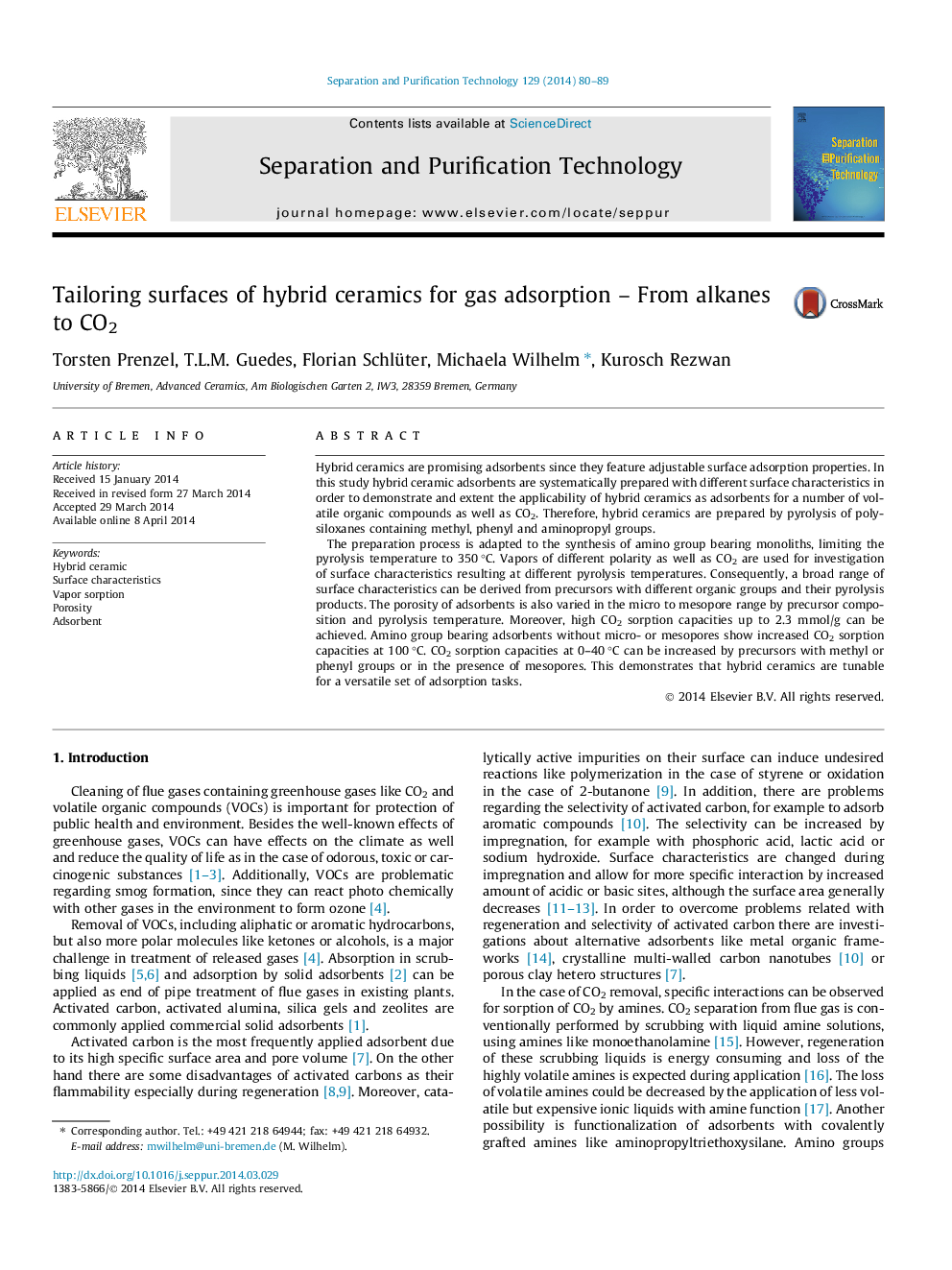| Article ID | Journal | Published Year | Pages | File Type |
|---|---|---|---|---|
| 641232 | Separation and Purification Technology | 2014 | 10 Pages |
•Micro- and mesoporous adsorbent prepared with adjustable surface characteristic.•Precursor selection and pyrolysis temperature to control surface characteristic.•Surface characteristics investigated by vapor sorption experiments.•Optimization of CO2 adsorption capacity at different temperatures.•Porosity important for CO2 adsorption at low temperatures.
Hybrid ceramics are promising adsorbents since they feature adjustable surface adsorption properties. In this study hybrid ceramic adsorbents are systematically prepared with different surface characteristics in order to demonstrate and extent the applicability of hybrid ceramics as adsorbents for a number of volatile organic compounds as well as CO2. Therefore, hybrid ceramics are prepared by pyrolysis of polysiloxanes containing methyl, phenyl and aminopropyl groups.The preparation process is adapted to the synthesis of amino group bearing monoliths, limiting the pyrolysis temperature to 350 °C. Vapors of different polarity as well as CO2 are used for investigation of surface characteristics resulting at different pyrolysis temperatures. Consequently, a broad range of surface characteristics can be derived from precursors with different organic groups and their pyrolysis products. The porosity of adsorbents is also varied in the micro to mesopore range by precursor composition and pyrolysis temperature. Moreover, high CO2 sorption capacities up to 2.3 mmol/g can be achieved. Amino group bearing adsorbents without micro- or mesopores show increased CO2 sorption capacities at 100 °C. CO2 sorption capacities at 0–40 °C can be increased by precursors with methyl or phenyl groups or in the presence of mesopores. This demonstrates that hybrid ceramics are tunable for a versatile set of adsorption tasks.
Graphical abstractFigure optionsDownload full-size imageDownload as PowerPoint slide
